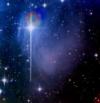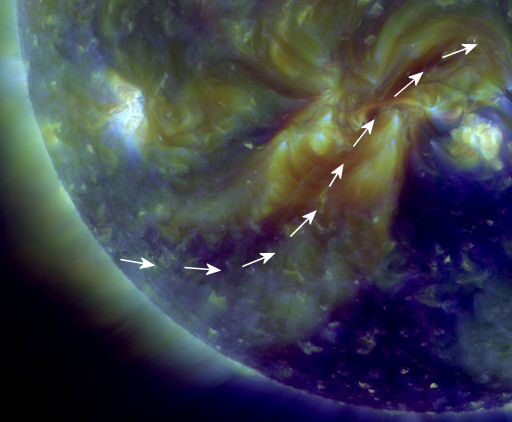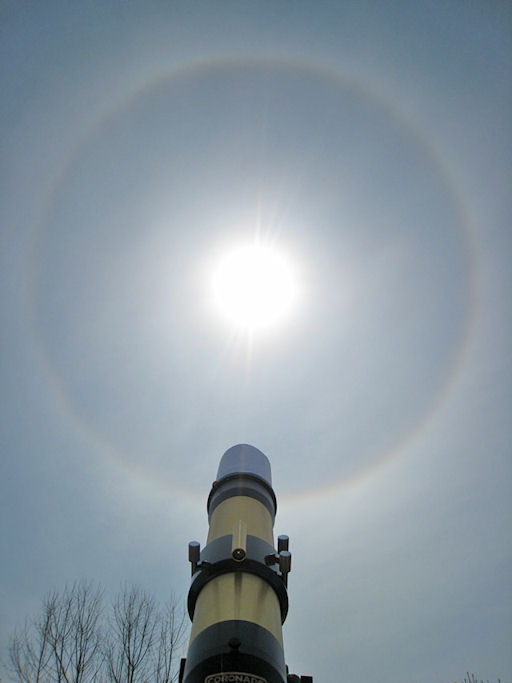

| Visitors Now: | |
| Total Visits: | |
| Total Stories: |

| Story Views | |
| Now: | |
| Last Hour: | |
| Last 24 Hours: | |
| Total: | |
Sun Blows Earth a Kiss of Hot Stellar Particles … EYE Report

 Newly-arriving data from NASA’s STEREO probes suggest that a coronal mass ejection (CME) might be heading toward Earth. The source of the cloud appears to be sunspot complex 1185-1186, which experienced an episode of magnetic instability during the early hours of April 9th. Stay tuned for updates to this preliminary analysis. CME movies: STEREO-A, STEREO-B.
Newly-arriving data from NASA’s STEREO probes suggest that a coronal mass ejection (CME) might be heading toward Earth. The source of the cloud appears to be sunspot complex 1185-1186, which experienced an episode of magnetic instability during the early hours of April 9th. Stay tuned for updates to this preliminary analysis. CME movies: STEREO-A, STEREO-B.
A coronal mass ejection (CME) is a massive burst of solar wind ..
The solar wind is a stream of charged particles ejected from the upper atmosphere of the Sun ..
GRAND FILAMENT: A magnificent filament of magnetism is curling around the sun’s southeastern quadrant today. Measuring more than 700,000 km from end to end, the vast structure is about twice as long as the separation between Earth and the Moon.
It's not easy for such a filament to remain suspended indefinitely above the stellar surface, and indeed a collapse is possible. Filaments falling onto the sun can trigger explosions called "Hyder flares." Is one in the offing? Readers with solar telescopes are encouraged to monitor developments.

What is a Hyder flare?
Flares are intense brightenings that occur in the solar chromosphere. Flares are generally observed from Earth using narrow band filters, typically with a bandwidth of less than 0.1 nm, and often centred on the Hydrogen-Alpha wavelength of 656.3 nm. (Flares also have counterparts, that is, sudden outbursts, in the radio and X-ray spectrum).
Most flares occur around active regions associated with sunspot groups. However, occasionally a flare (sudden brightening) is observed well away from an active region or sunspot group. These flares are invariably associated with the sudden disappearance of a large (thick, long, 'bushy') dark solar filament, and are termed Hyder flares.
The bottom line is that at this stage in solar physics we do not really know what produces a flare nor what produces a CME. There are competing theories, but all tend to have deficiencies with respect to matching the observational evidence. We certainly believe that they all depend on the reconfiguration of magnetic fields as their primary energy source, but in the final analysis, we really only believe this because we can conceive of no other solar energy source of sufficient magnitude.
Article found HERE http://spaceweather.com/
SUN HALO: Today in upstate New York, amateur astronomer Mike Taormina aimed his solar telescope at the Grand Filament–but he saw something else instead. "A thin layer of clouds created a beautiful circular halo around the sun." He stepped back from the eyepiece and took this picture:
Sun haloes are caused by ice crystals in high clouds. With its abundance of wispy cirrus, northern spring is a good time to see the phenomenon. Keep an eye out for luminous circles and other forms around the sun.




